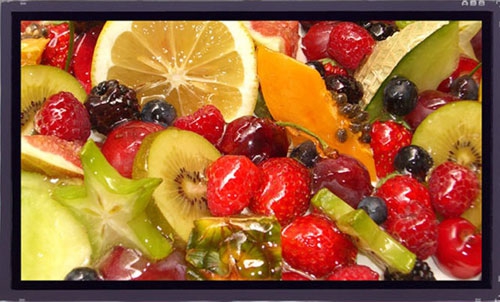Thursday, September 25, 2008
Casio Develops Small Ultra-High Resolution Screen
Posted by Jason Dunn in "Digital Home News" @ 12:00 PM
"Casio on Thursday unveiled what it says is the sharpest display yet and took significant steps towards making HD video possible on mobile devices. Although measuring just two inches diagonally, the display uses a new hyper amorphous silicon LCD with an extremely small pixel structure and 15.5 micron dot pitch that lets Casio produce a 960x540 resolution. The output is a full quarter that of 1080p HD and results in an extremely dense 546 dots per inch, generating a near print-like quality to the final image."

On mobile devices, screen resolution really matters - anyone that has gone from a QVGA (320 x 240) screen to a VGA (640 x 480) screen can tell you that. On digital cameras, when DSLRs went from 230,000 pixel displays up to 920,000 pixel displays, there was a huge improvement in how easy it was to review your photos and see real details. PPI, which stands for "pixels per inch", is a basic measurement of how many pixels there are on a screen to draw something - and it's often confused with DPI, which is a measurement related to printing. On an average 22 inch computer monitor, for instance, the display resolution will be 1680 x 1050 - which gives you a PPI of only 90. The Zune 8 has a 1.8 inch screen with a resolution of 240 x 320 - which gives it 222ppi.
The higher the PPI, the more pixels there are to draw every item on the screen, and hence the better everything tends to look. Anything over 200 ppi tends to look fantastic, and the printed page has been said to be around 300ppi, so the idea of a 546ppi screen is simply mind-boggling. However, the more pixels, the more effort is needed to push and display those pixels - so the question of power consumption and processing requirements remain. Still, this is significant development that bodes well for a number of portable devices.









